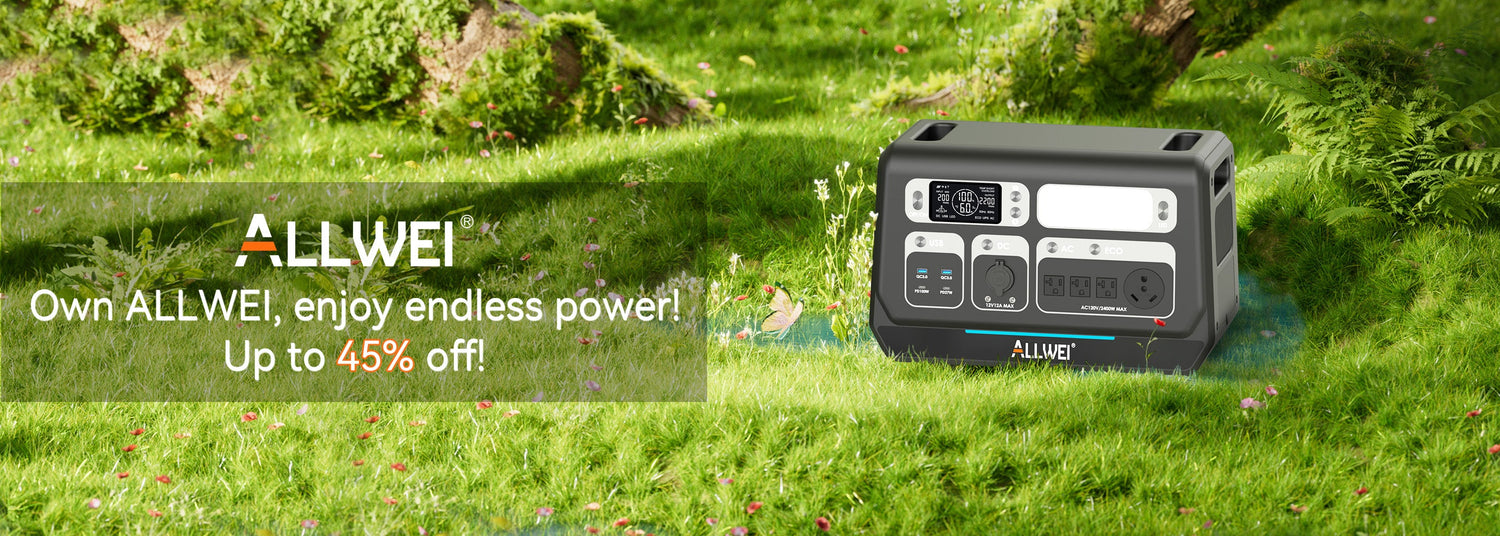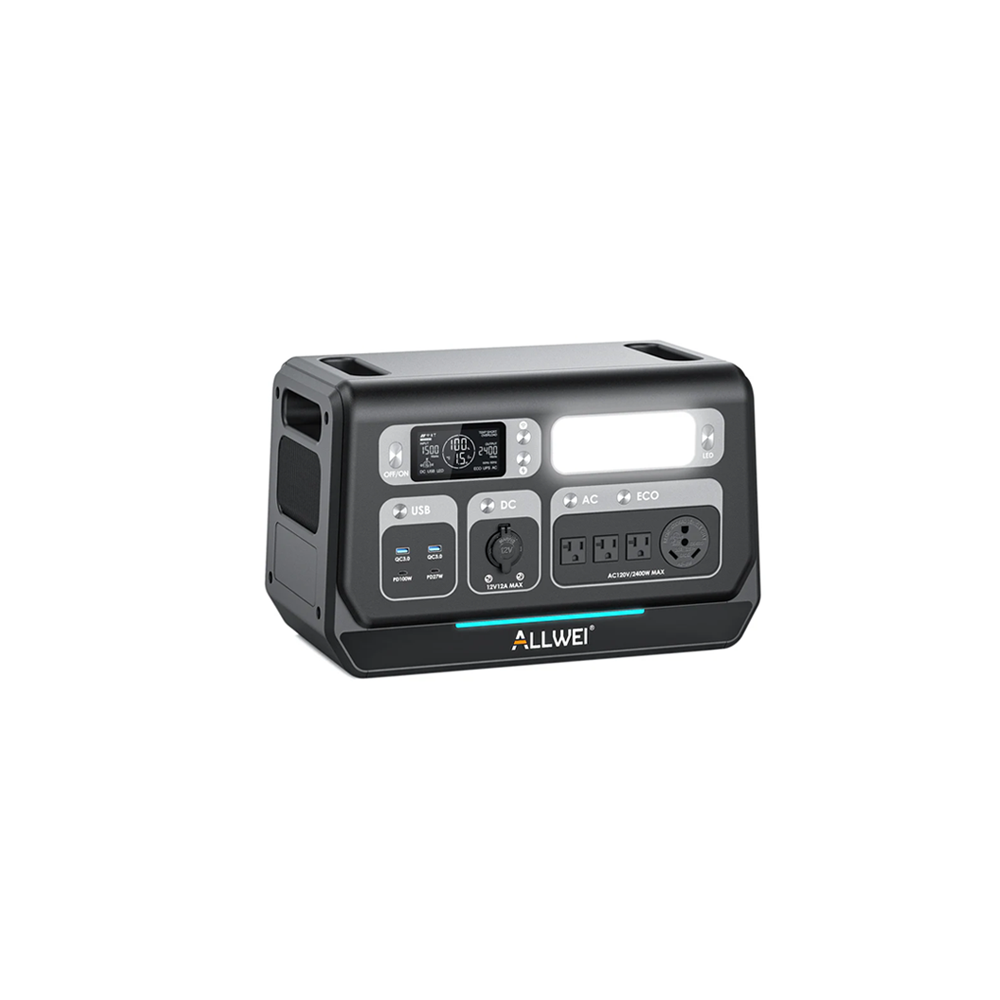Electricity is one of the cornerstones of modern life. From the lights in our homes to the devices we use every day, nearly everything depends on reliable access to electrical power. But have you ever stopped to ask: how is electricity actually generated at a power station? Understanding this process not only gives us a deeper appreciation for the energy we often take for granted but also helps us make informed choices about the future of clean and sustainable power.
In this article, we’ll walk through the steps of how electricity is generated at a typical power station, explore the different types of power generation, and connect the discussion to portable solutions like ALLWEI portable power stations, which bring the benefits of large-scale electricity generation down to a household or outdoor scale.
The Basic Principle: Converting Energy Into Electricity
At the core of every power station lies a simple principle: energy cannot be created or destroyed, but it can be transformed. Power stations convert one form of energy—such as heat, motion, or sunlight—into electrical energy that can be distributed through grids and used by consumers.
Most large-scale stations follow this sequence:
Fuel or natural resources provide energy. This might be coal, natural gas, uranium, wind, water, or sunlight.
Energy is used to produce mechanical motion. Typically, this involves spinning a turbine.
A generator converts mechanical motion into electricity. Inside the generator, a rotating magnet passes by coils of wire, creating an electrical current through electromagnetic induction.
Electricity is transmitted through power lines. High-voltage transmission lines deliver power to homes, businesses, and industries.
This fundamental process underpins nearly every type of power station, though the energy sources differ widely.
Types of Power Stations
1. Fossil Fuel Power Stations
These remain the most common worldwide. Coal, oil, or natural gas is burned to heat water, producing steam that spins turbines connected to generators. While effective, these stations emit carbon dioxide and contribute to climate change.
2. Nuclear Power Stations
Instead of burning fuel, nuclear plants use controlled fission reactions in uranium atoms to release massive amounts of heat. This heat turns water into steam, powering turbines. Nuclear energy produces no direct carbon emissions but raises concerns about waste and safety.
3. Hydroelectric Power Stations
Dams store water in reservoirs. When released, water flows through turbines, spinning them to produce electricity. This is renewable and clean, though it requires suitable geographic conditions and can disrupt ecosystems.
4. Wind Power Stations (Wind Farms)
Wind turns the blades of giant turbines, which directly rotate generators. This is a sustainable and fast-growing source of energy, though it depends on weather patterns.
5. Solar Power Stations
There are two main types:
Photovoltaic (PV) plants use solar panels to directly convert sunlight into electricity.
Concentrated solar power (CSP) uses mirrors to focus sunlight, heating fluid to generate steam and spin turbines.
6. Geothermal Power Stations
These tap into the Earth’s natural heat. Hot water or steam from underground reservoirs is brought to the surface to turn turbines and produce electricity.
Each method has its own advantages and limitations, but all share the common goal of producing safe, reliable electricity to meet growing global demands.
Transmission and Distribution
Once electricity is generated, it must be transported to where it’s needed. This involves three main steps:
Step-up transformers increase voltage for efficient long-distance transmission.
High-voltage power lines move electricity across cities and regions.
Step-down transformers reduce voltage for safe use in homes and businesses.
By the time it reaches your wall socket, electricity has traveled miles from its power station origin, transformed multiple times along the way.
Why Portable Power Matters
Large power stations serve millions of people, but their scale also highlights a limitation: they are centralized. When natural disasters strike or when you’re far from the grid—say, while camping—electricity isn’t always readily available. That’s where portable power stations come in.
Brands like ALLWEI are bringing the same principles of electricity generation to individuals. Instead of massive turbines and complex transmission systems, ALLWEI portable power stations store energy in high-capacity lithium batteries and convert it into usable AC and DC power for your devices.
For example:
At Home: ALLWEI power stations can act as backup energy during blackouts, keeping essential devices like refrigerators, routers, and medical equipment running.
Outdoors: Whether camping, traveling in an RV, or enjoying a tailgate party, ALLWEI’s lightweight but powerful stations provide renewable energy on the go.
Solar Integration: Many ALLWEI models can connect to solar panels, essentially acting as a mini “solar power station” that operates independently of the grid.
By combining portability with sustainability, ALLWEI empowers users to generate and store their own electricity in a way that mirrors how major power plants operate, just on a smaller scale.
The Future of Power Generation
As demand for clean energy grows, the world is moving toward more decentralized and sustainable models. While traditional power stations will continue to play a role, advances in renewable energy, smart grids, and personal energy solutions are reshaping how electricity is generated and consumed.
Imagine a future where every household can act like a mini power station—producing, storing, and sharing electricity. With innovations from companies like ALLWEI, this vision is no longer far off.
Conclusion
So, how is electricity generated at a power station? In simple terms, it’s about converting natural resources into motion, motion into electrical current, and delivering that power to where it’s needed. From coal and nuclear to wind, solar, and beyond, the process continues to evolve as technology advances.
And while massive stations power cities, portable solutions like ALLWEI power stations bring this same principle directly to your home, your camping trip, or your emergency kit. By understanding both large-scale and small-scale generation, we can better appreciate the incredible energy systems that fuel our lives—and take steps toward a cleaner, more independent future.




Leave a comment
This site is protected by hCaptcha and the hCaptcha Privacy Policy and Terms of Service apply.